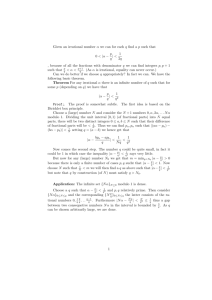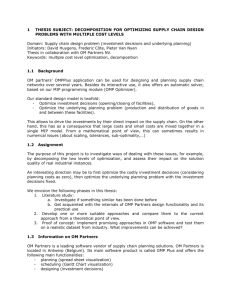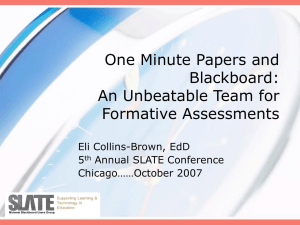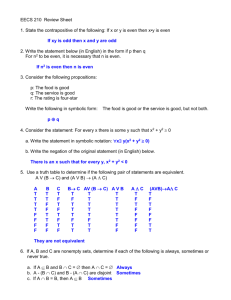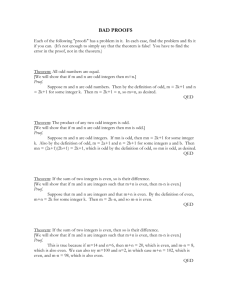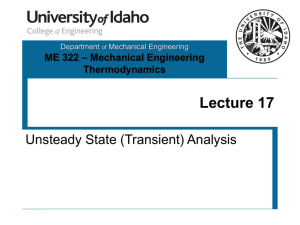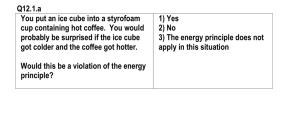0 0 q1
advertisement
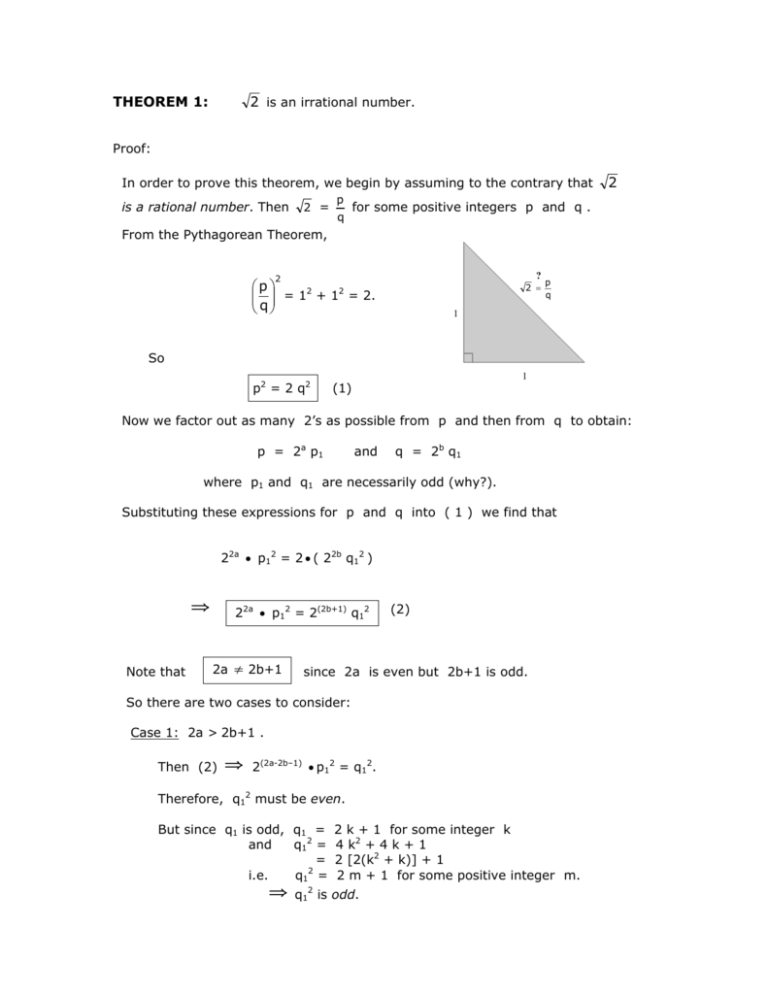
2 is an irrational number. THEOREM 1: Proof: In order to prove this theorem, we begin by assuming to the contrary that is a rational number. Then 2 = p q 2 for some positive integers p and q . From the Pythagorean Theorem, ? 2 ⎛p ⎞ ⎜⎜ ⎟⎟ = 12 + 12 = 2. ⎝ q⎠ 2 = p q 1 So p2 = 2 q2 1 (1) Now we factor out as many 2’s as possible from p and then from q to obtain: p = 2a p1 and q = 2b q1 where p1 and q1 are necessarily odd (why?). Substituting these expressions for p and q into ( 1 ) we find that 22a • p12 = 2 • ( 22b q12 ) 0 Note that 22a • p12 = 2(2b+1) q12 2a s 2b+1 (2) since 2a is even but 2b+1 is odd. So there are two cases to consider: Case 1: 2a > 2b+1 . Then (2) 0 2(2a-2b–1) • p12 = q12. Therefore, q12 must be even. But since q1 is odd, q1 = and q12 = = i.e. q12 = 2 k + 1 for some integer k 4 k2 + 4 k + 1 2 [2(k2 + k)] + 1 2 m + 1 for some positive integer m. 0 q12 is odd. Thus, q12 is both even and odd. – This is impossible. Consequently, 2a cannot be larger than 2b+1. Case 2: Suppose 2a < 2b+1 . From an argument analogous to that given in Case 1 (which is left for the reader to formulate) we may conclude that p12 is both even and odd. Of course, this is not possible. Consequently, 2a cannot be smaller than 2b+1. Therefore, from our results in cases 1 and 2 above, we must conclude that our initial assumption: 2 = p q for some positive integers p and q was false. Hence, 2 is an irrational number. __________________________________________________________ THEOREM 2: The square root of any natural number that is not a perfect square is irrational. The following proof was originally proposed by the famous German mathematician, Richard Dedekind (October 6, 1831 – February 12, 1916). Assume D is a non-square natural number then there is an integer n such that: n2 < D < (n+1)2 Assume also that (1) D is a rational number: D = p q where q is the smallest natural number for which this is true(*), then Dq2 = p2 (2) Multiplying (1) through by q2 we get n2q2 < Dq2 < (n+1)2q2 . (3) Upon substituting from (2) for the middle term in (3) and then removing the squares, we find: nq < p < (n+1)q (4) Let s = p – nq then it follows immediately from (4) that 0 < s < q . Furthermore, upon multiplying through (1) by p2 we find: n2p2 < Dp2 < (n+1)2p2 (5) Now substituting: p2 = Dq2 for the middle term in (5) and removing the squares we get: np < Dq < (n+1)p (6) Let r = Dq – np then it follows immediately from (6) that 0 < r < p. Now consider the difference: Ds2 – r2 = D(p-nq)2 – (Dq-np)2 = Dp2 – 2Dnpq + Dn2q2 – D2q2 + 2Dnpq – n2p2 = Dp2 + Dn2q2 – D2q2 – n2p2 Using the fact that Dq2 = p2 it is evident that the right hand side reduces to zero. Thus, Ds2 – r2 = 0 0 D= r2 s2 0 D = r s But s is greater than zero and less than q which contradicts the assumption (*) about q. So now the result follows by contradiction. __________________________________________________________ THEOREM 3: The decimal expansion of any irrational number never repeats or terminates. To show this, suppose we divide integers p by q (where q is nonzero). When long division is applied to the division of p by q, only q remainders are possible (namely, 0, 1, 2, . . . , q–1). If 0 appears as a remainder, then decimal expansion terminates. If 0 never occurs, then the algorithm can run at most q−1 steps without using any remainder more than once. After that, a remainder must recur, and then the decimal expansion repeats. It is not difficult to show that every recurring decimal represents a rational number. Exercise: Express the number A = 0.7162162162 . . . as the quotient of two integers.
